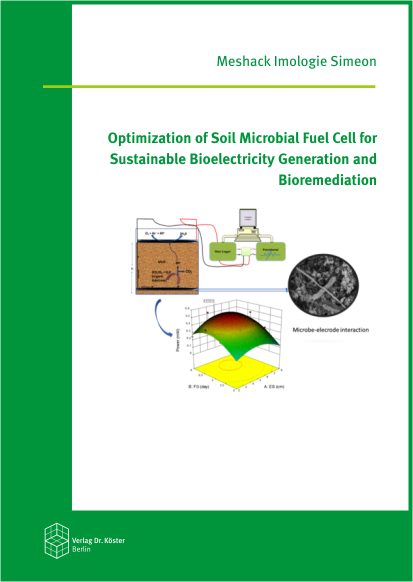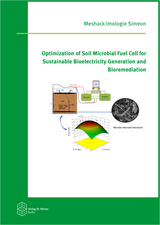Optimization of Soil Microbial Fuel Cell for Sustainable Bioelectricity Generation and Bioremediation
Seiten
The focus of energy strategies in all countries has shifted from traditional fossil fuels to environmentally friendly and renewable energy sources due to concerns about environmental protection and sustainability. Microbial Fuel Cell (MFC) technology is one of the leading research topics as a potential renewable energy source due to its environmental friendliness and versatility. Among MFC concepts, soil MFC (SMFC) is very attractive for bioremediation of polluted environments while generating bioelectricity, which has applications in sensor development. However, the low energy yield and associated performance instability require optimization of some key factors to develop SMFC beyond laboratory experiments. While many of these factors have generally been investigated in single-factor experiments, knowledge of the interactive effects of key variables on SMFC performance is limited. Therefore, this study aims to determine the individual and interactive effects of selected variables on SMFC performance by integrating the variables into a single experimental design. The goal is to provide a solution for optimal SMFC performance for sustainable bioelectricity generation and bioremediation applications.
This study contributes to the body of scientific knowledge by determining the best combination of electrode material, electrode spacing, and substrate loading interval to achieve the optimal performance of SMFC for stable bioelectricity generation. Among other things, the study demonstrated the potential practical implementation of the optimized SMFC system for lighting, biosensor development, and bioremediation of polluted soil. Further studies could focus on improving the SMFC design for continuous substrate utilization and moisture availability during bioremediation, as well as developing an efficient power management system to scale up the output of a single SMFC without stacking many units.
This study contributes to the body of scientific knowledge by determining the best combination of electrode material, electrode spacing, and substrate loading interval to achieve the optimal performance of SMFC for stable bioelectricity generation. Among other things, the study demonstrated the potential practical implementation of the optimized SMFC system for lighting, biosensor development, and bioremediation of polluted soil. Further studies could focus on improving the SMFC design for continuous substrate utilization and moisture availability during bioremediation, as well as developing an efficient power management system to scale up the output of a single SMFC without stacking many units.
| Erscheinungsdatum | 26.05.2023 |
|---|---|
| Verlagsort | Berlin |
| Sprache | englisch |
| Maße | 148 x 210 mm |
| Themenwelt | Technik ► Elektrotechnik / Energietechnik |
| Technik ► Umwelttechnik / Biotechnologie | |
| Schlagworte | Bioelektrizität • Biostrom • Brennstoffzelle • Energiequelle • Erneuerbare Energien |
| ISBN-10 | 3-96831-034-9 / 3968310349 |
| ISBN-13 | 978-3-96831-034-3 / 9783968310343 |
| Zustand | Neuware |
| Haben Sie eine Frage zum Produkt? |
Mehr entdecken
aus dem Bereich
aus dem Bereich
Technologie – Berechnung – Klimaschutz
Buch | Hardcover (2023)
Hanser (Verlag)
39,99 €




